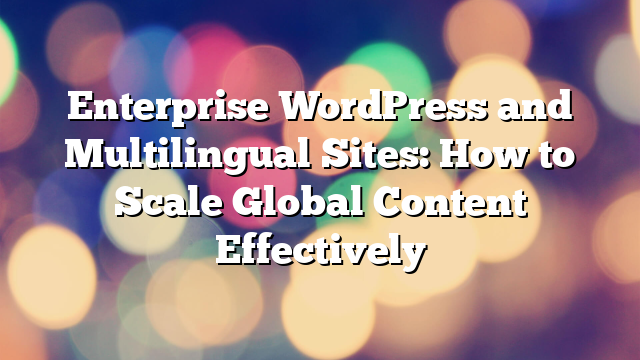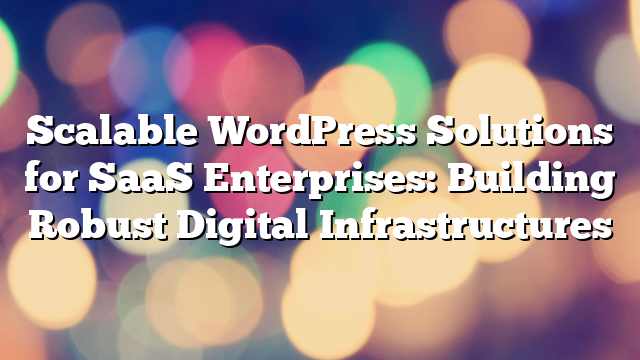Enterprise WordPress and Multilingual Sites: How to Scale Global Content Effectively
25.04.2025

Enterprise WordPress and Multilingual Sites: How to Scale Global Content Effectively
As businesses expand across borders, having a multilingual website is no longer a luxury—it’s a necessity. For enterprise-level companies relying on WordPress, managing content in multiple languages at scale poses unique technical and organizational challenges. With the right strategy and tools, WordPress can serve as a powerful multilingual platform.
Why Enterprises Need a Robust Multilingual WordPress Setup
Global audiences expect content in their native language, and studies show that users are far more likely to engage with and purchase from websites in their own language. For enterprises, this means not just translating pages, but also localizing messaging, navigation, and user experience—all without compromising performance or brand consistency.
Top Multilingual Plugin Options for WordPress
Several plugins offer enterprise-grade solutions for multilingual websites. Here are a few widely adopted by global brands:
- WPML: A powerful, full-featured plugin for translation management and multilingual SEO. Great for large-scale content operations.
- Polylang: Lightweight and flexible, Polylang works well with custom post types and integrates with most themes and plugins.
- MultilingualPress: Built specifically for WordPress Multisite, allowing each language to live on its own subdomain or domain for better performance and scalability.
Enterprise Architecture Considerations
For enterprise businesses, scalability is key. While a plugin-based setup might work for smaller sites, larger operations often benefit from using WordPress Multisite in combination with multilingual tools. This allows for:
- Isolated content management per region
- Faster page load times due to distributed server architecture
- Independent SEO strategies per language
- Team-based publishing workflows in different locales
Localization vs. Translation: It’s Not the Same
Simply translating text isn’t enough. Enterprise WordPress sites must also adapt visuals, cultural references, currency formats, and even product offerings. Localization involves tailoring every aspect of a page to resonate with a local audience. This may require working with in-region marketing teams and customizing page layouts for different languages.
Multilingual SEO Best Practices
To ensure your translated pages rank globally, implement the following SEO guidelines:
- Use
hreflangtags to signal language and regional targeting - Create unique URLs for each language (e.g.,
/en/,/fr/) - Translate metadata, alt text, and slugs—not just page content
- Maintain a consistent internal linking structure across languages
Content Governance and Workflow
Managing multilingual content requires clear workflows. Enterprises should define editorial roles, use translation memory systems, and employ automated review processes to ensure quality and consistency. Integration with platforms like WPML’s Translation Management module or third-party systems like Lokalise or Crowdin can streamline these efforts.
Conclusion
Scaling a multilingual WordPress website at the enterprise level demands more than just installing a plugin. It requires a strategic approach to architecture, content governance, SEO, and localization. When executed well, it opens the door to new markets and global success.
Want help building a scalable multilingual WordPress solution? Vipe Studio specializes in enterprise WordPress development, including multilingual setups and Multisite architectures. Get in touch with our experts today!



